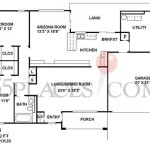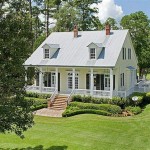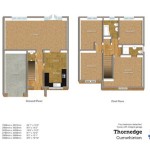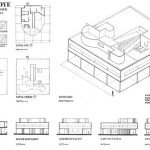Small Craftsman Style House Plans: A Detailed Exploration
The Craftsman style, born from the Arts and Crafts movement of the late 19th and early 20th centuries, continues to resonate with homeowners seeking a blend of simplicity, functionality, and natural aesthetics. Small Craftsman house plans, in particular, represent an appealing option for individuals or families desiring a comfortable and efficient living space without sacrificing character. This architectural style emphasizes handcraftsmanship, natural materials, and a connection to the outdoors, often resulting in charming and practical homes.
The enduring popularity of small Craftsman homes stems from their ability to combine affordability with a timeless design. They often incorporate features that maximize space and create a cozy, inviting atmosphere. Understanding the key characteristics and benefits of small Craftsman style house plans can help potential homeowners determine if this architectural style aligns with their needs and preferences.
Key Characteristics of Small Craftsman Homes
Small Craftsman homes, while varying in specific design elements, typically share a common set of features that define their unique character. These characteristics contribute to the overall aesthetic and functionality of the house, creating a distinctive and recognizable style.
One of the defining features is the emphasis on natural materials. Wood, stone, and brick are commonly used in both the exterior and interior of the house. Exposed rafters and beams are often incorporated into the design, showcasing the structural elements of the building. Wooden siding, such as clapboard or shingles, is a frequent choice for the exterior, adding texture and warmth. Stone or brick may be used for foundation accents or chimneys, further emphasizing the natural aesthetic.
Another crucial element is the low-pitched roof with wide overhanging eaves. This design feature serves both aesthetic and functional purposes. The wide eaves provide protection from the elements, shielding the walls and windows from rain and sun. The low pitch of the roof contributes to the horizontal emphasis characteristic of the Craftsman style, creating a sense of groundedness and stability. Gabled roofs are common, adding visual interest and creating attic space.
A prominent front porch is almost a signature feature of Craftsman homes. The porch is often covered and supported by substantial columns, frequently made of wood or stone. This outdoor space serves as an extension of the living area, providing a welcoming entry point and a comfortable spot for relaxation and social interaction. The porch often features built-in seating or decorative elements, adding to its charm and appeal.
Details are important in Craftsman design. Exposed rafter tails, decorative knee braces, and handcrafted detailing around windows and doors are common. These small touches contribute to the overall sense of craftsmanship and add visual interest to the exterior. Interior details might include built-in cabinetry, wainscoting, and handcrafted trim, further reinforcing the emphasis on quality and attention to detail.
Windows in Craftsman homes are often multi-paned, with simple yet elegant designs. Double-hung windows are common, allowing for efficient ventilation. Stained glass accents may be incorporated into windows or doors, adding a touch of artistry and color. The placement and size of windows are carefully considered to maximize natural light and create a connection to the outdoors.
Advantages of Choosing a Small Craftsman House Plan
Selecting a small Craftsman house plan offers several advantages, particularly for individuals or families seeking an affordable and sustainable housing option. The benefits extend beyond aesthetics, encompassing practicality, efficiency, and environmental considerations.
One significant advantage is the affordability. Smaller homes generally require less material and labor to build, resulting in lower construction costs. The compact size also translates to reduced heating and cooling expenses, making the home more energy-efficient and environmentally friendly. The lower overall cost of ownership makes small Craftsman homes an attractive option for first-time homebuyers or those seeking to downsize.
Energy efficiency is a key benefit of many small Craftsman designs. The emphasis on natural materials and careful construction techniques can contribute to a well-insulated and energy-efficient home. Features such as efficient windows, proper insulation, and passive solar design can further reduce energy consumption and lower utility bills. The use of sustainable building materials, such as reclaimed wood or recycled content, can also minimize the environmental impact of the home.
Low maintenance is another appealing aspect of small Craftsman homes. The use of durable materials and simple designs reduces the need for frequent repairs and upkeep. The straightforward architectural style minimizes complex detailing that can be prone to damage or deterioration. This translates to lower maintenance costs and less time spent on home repairs, freeing up homeowners to pursue other interests.
A strong sense of community is often associated with small Craftsman homes. Their compact size and welcoming front porches encourage interaction with neighbors and create a sense of community. The focus on natural materials and simple designs can also foster a connection to the surrounding environment, promoting a more sustainable and mindful lifestyle. The charm and character of Craftsman homes often contribute to the overall appeal and desirability of a neighborhood.
Furthermore, small Craftsman homes promote efficient space utilization. Clever design can maximize the functionality of a limited square footage. Open floor plans, built-in storage solutions, and multi-functional spaces can create a comfortable and livable environment even in a smaller home. This efficient use of space reduces clutter and promotes a more minimalist lifestyle.
Factors to Consider When Selecting a Small Craftsman House Plan
Choosing the right small Craftsman house plan requires careful consideration of several factors to ensure that the design meets the specific needs and preferences of the homeowner. These factors encompass lifestyle considerations, site conditions, and budgetary constraints.
Lifestyle considerations are paramount. The number of occupants, their individual needs, and their preferred lifestyle should all be taken into account. For example, a family with young children may require more bedrooms and a dedicated play area, while a single individual may prioritize a home office or a spacious living room. The layout of the house should facilitate daily routines and accommodate the homeowner's specific needs and activities.
Site conditions also play a crucial role in selecting a suitable house plan. The size and shape of the lot, its orientation, and the surrounding landscape can all influence the design of the house. A sloped lot may require a different foundation design than a flat lot. The orientation of the house should be optimized to maximize natural light and minimize exposure to harsh weather conditions. The surrounding landscape should be considered to ensure that the house blends harmoniously with its surroundings.
Budget is a critical factor in any home building project. It is important to establish a realistic budget and select a house plan that falls within that budget. Construction costs can vary depending on the location, the materials used, and the complexity of the design. It is advisable to obtain multiple bids from contractors to ensure that the project stays within budget. It is also important to factor in ongoing maintenance costs, such as property taxes, insurance, and utility bills.
Future needs should also be considered when selecting a house plan. If there is a possibility of expanding the family or needing more space in the future, it may be wise to choose a plan that allows for future additions or modifications. This could involve selecting a plan with an unfinished attic or basement that can be converted into living space at a later date. It is also important to consider the resale value of the house. A well-designed and well-maintained Craftsman home can retain its value over time, making it a sound investment.
Local building codes and regulations must be adhered to. These codes specify the requirements for building permits, zoning regulations, and construction standards. It is important to consult with local authorities to ensure that the selected house plan complies with all applicable codes and regulations. Failure to comply with these codes can result in delays, fines, or even the rejection of the building permit.
Finally, personal preferences should be considered. The homeowner should select a house plan that reflects their personal style and aesthetic preferences. This could involve choosing specific colors, materials, and finishes that align with their taste. It is important to create a home that is both functional and aesthetically pleasing, reflecting the unique personality of the homeowner.

House Plan 009 00121 Bungalow 966 Square Feet 2 Bedrooms 1 Bathroom Style Plans Craftsman

Small Craftsman Cottage Plan 94371 At Family Home Plans In Our Best Ing Floor Collection Style House

Plan 001h 0124 The House

Craftsman Bungalow House Plan Porte Cochere 3 Bed Bath

Craftsman Style House Plans Big And Small Houseplans Blog Com

Craftsman House Plans Home Floor Monster

Craftsman Style House Plans Big And Small Houseplans Blog Com

Bungalow House Plans We Love Blog Homeplans Com

Plan 025h 0244 The House

The Dewfield Small Craftsman House Plan Plans Style








